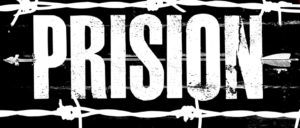June 1990.
The Strangeways uprising, distinguishable for its intensity and duration, has generated a plethora of interpretations and analysed about what are perceived as the current ills of the British prison system and placed prisons as an issue close to the top of the political agenda. Unfortunately, none of the discussions about the cause and the rationale of the uprising, which acted as a catalyst for generalised unrest throughout the entire prison system, went much beyond the usual superficial and non-contentious issues of overcrowding, staff shortages and, of course, the existence of a ubiquitous minority of ‘subversive’ prisoners hel-lbent on disrupting prison life for purely gratuitous reasons.
The terms of the Strangeways-inspired debate have been set by spokespeople for the prison system itself, and the ‘respectable’ prison reform pundits have done little more than collude in shifting the focus of public attention away from grievances raised by the Strangeways prisoners themselves (essentially complaints about pshsical and psychological brutality) and onto issues morte palatable to the establishment. Inevitably, factors like gross overcrowding and a denial of basic facilities contributed to the uprising at Stangeways as one of a group of prisons (Wandsworth, Leeds, Winson Green and Lincoln sharing this group) renowned for its brutal and inhuman treatment of prisoners.
Essentially, the disturbance at Strangeways was an act of resistance on the part of the prisoners to a regime based on a long tradition of officially senctioned violence and overt intimidation. In view of the complete absence of any grievance or effective procedure for dealing with prisoners complaints and the almost total lack of legal accountability as far as the behaviour and activities of prison staff are concerned, the uprising was both understandable and inevitable. If the state is prepared to sanction the unlkawful brutality of prison officers and virtually allow them a free hand to do as they please with prisoners in the interests of ensuring so-called ‘good order and discipline’ in hell-holes like Strangeways, then protest in whatever manner and way they consider to be most effective.
The system itself in its treatment of prisoners has dictated the terms of conflict and struggle in prison and can therefore hardly be surprised when prisoners adopt a strategy of direct action as a means of both highlighting their predicament and defending their basic human rights. In that sense the uprising at Strangeways was primarily a response to the far greater institutionalised violence of the prison system and very much an authentic front-line of resistance against an instrument of state repression that over the last ten years in particular has been wielded with enthusiasm against the social consensus and the victims of Thatcherite Britain. The Strangeways prisoners are therefore to be applauded for their courage and audacity in fighting back against a system that attampts to dehumanise and brutalise them, and deserve the recognition and support of all those outside prison committed to the wider struggles against injustice and oppression.
The current economic and social crisis pervading British capitalist society is finding its most explosive points amongst the most marginalised and dispossessed (it’s probably no coincidence that Strangeways ignited during the same weekend that the huge anti-poll tax demonstration in London became ransformed into a pitched battle with the police) The constituency of poor and oppressed people with no representation in capitalism’s political institutions or protections in bourgeois law, the savagely disadvantaged who compose the underside of a class-ridden society in terminal decay. Conditions at Strangeways prison before the uprising were a microcosm of life for the poor in Thatcherite Britain, and the rebellion prefigures the sort of struggles about to assume form in society generally within the next decade; recent ‘disturbances’ in the prison system indicate that prisoners will be close to the forefront in these struggles.
Predictably, in its wake the uprising at Strangeways has produced promises from the government of increased repression in prison and ‘tougher’ legal sanctions against those prisoners who dare to resist – it represents a message that prisoners are well-accustomed to; subit or you will be crushed. The most enduring image of the Strangeways uprising will surely be the unbroken defiance of the last group of prisoners to descend from the prison’s rooftop – it symbolised well the unbroken spirit of resistance that exist amongst the poor in prison, and it will survive no matter what techniques or methods of repression are employed against it.
